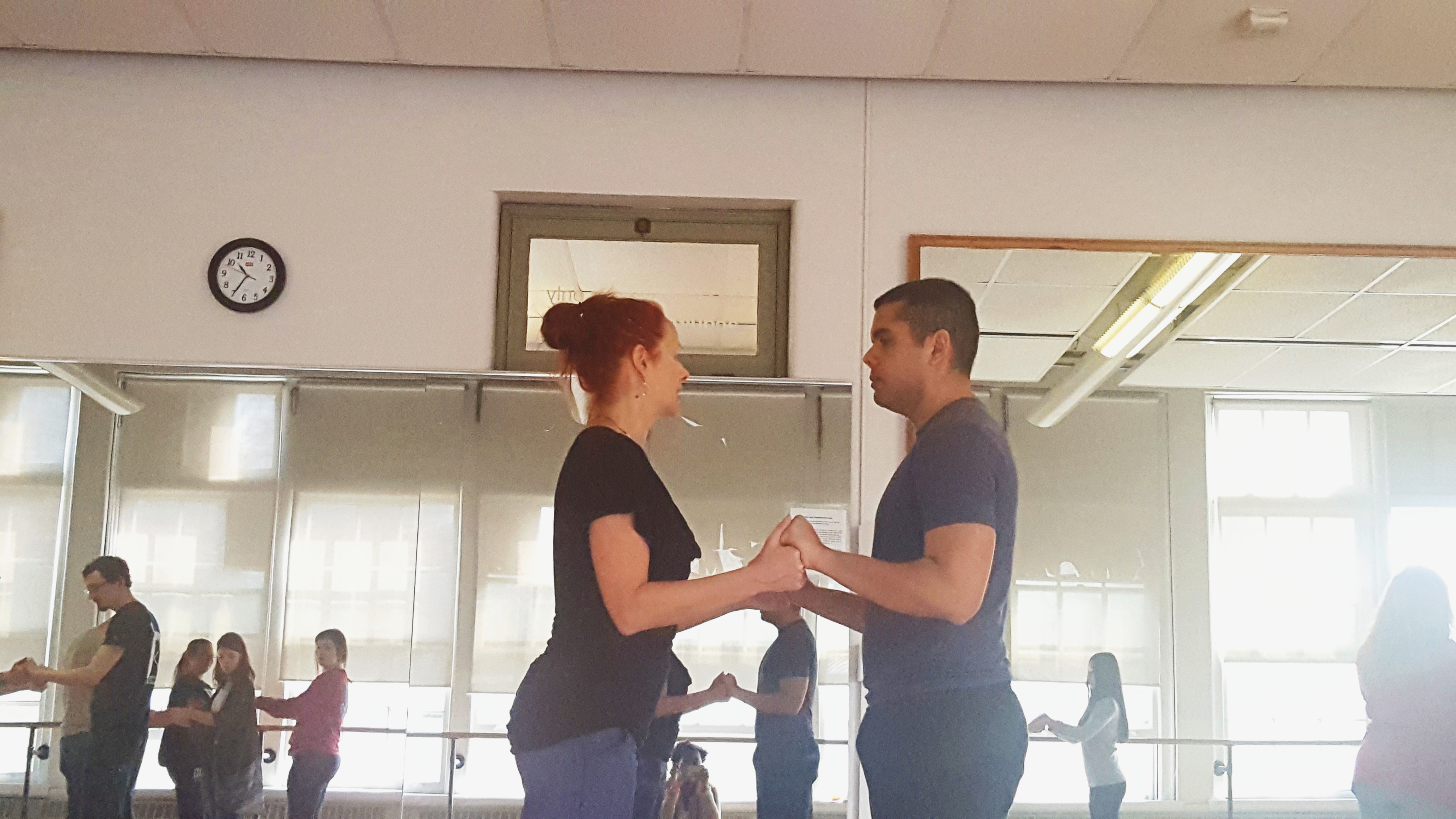Uncategorized

Queer Dance
By: Ian Kenyon, Kalila Bell
Posted on:
When looking at dance, movement can be a universal tool not just for pleasure, but to also make a statement. Juliet McMains is a professor in the dance department at Washington University. She twirls through the room with ease and grace alongside the rhythm of the music. McMains recently did a study on the Queer Tangueras of Argentina.
“My own experience speaks to a more conscious engagement of sexual desire. I’m a straight woman, mostly. My appearance is quite feminine I wear dresses, high heels, makeup, I’ve mostly dated men, but I’m also attracted to women. Very feminine women, women whose appearances and energy are even more feminine than mine,” said McMains, “Tango allows me to hold a woman in my arms while she is expressing archetypal feminine qualities of receptivity. Softness and flexibility furthermore my role as leader in this exchange is to, entertain and protect her. Invoking an archetypal masculine, feminine dynamic that I find strangely satisfying.”
She is not alone in this experience. Ben Roach is an OHIO senior who also studies dance.
“I can’t tell you a ballet dance I did where I wasn’t the love interest of a woman or where I wasn’t there to really emphasize the woman and lift the woman and do those typical tasks of- basically of heteronormative relationships. So ballet was always kind of a struggle for me for that reason and kind of helped me learn that something was off,” said Roach, “They were like-‘Look at her like you love her!’ And I’m like, ‘I don’t know her. I don’t love her,’ and such and kind of when I’m looking over at the other boys in the tights, I’m like, ‘I’d rather be partnering with him,’ or things like that, it helped me realize a bit more my own sexuality.”
Whether it be in an early dance class in Appalachia or in a milonga in Argentina, dance has given ways for people to explore their sexuality.
“A woman who was able to transform her sexual identity from straight to lesbian through experimenting in tango first, with uh trying out a new identity. And another individual who became gender queer and started playing with masculine and feminine identities and now doesn’t identity as a man or a woman,” said McMains.
What is it about dance that makes individuals like the ones mentioned and others feel comfortable to dive into their sexuality?
“Dancing publicly with other women all over the world is, I feel always activism to say this is ok you can all do this,” said McMains.
Roach echoed similar sentiments. “When I take the time to just allow myself to experience and just be whatever it’s going to be, there is a sense of euphoria that comes with it and sense of power,” said Roach.
It is work like that of those in Queer Tango in Buenos Aires, who are challenging the archetypal roles put on by traditional dances.
“Tango started out being practiced between men and it’s more recently, not so recently, most of the 20th century it was the symbol of heterosexual desire,” said McMains.
Although dance is very much an art form, it is also a woven part of culture and political activism.
“I think dance is always going to say something and that’s the great thing about it is that it’s up for interpretation. So even if a piece doesn’t have intentional activism in it, it still can be a piece that moves you to do something and to make a change,” said Roach.
Dance historically has roots in showing societal norms and how they evolve. Students like Roach, along with professors such as McMains do not see that changing.
“Well, dance is both a reflection of and a catalyst for everything in society and politics, it’s crucial,” said McMains.
From the history of traditional and modern dance to now, the art form will continue to remain a place for queer folk alike to express themselves for change. For the Outlet I’m Ian Kenyon.

